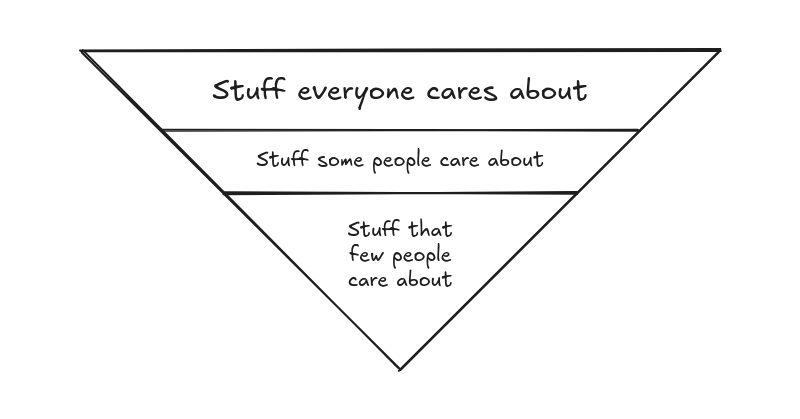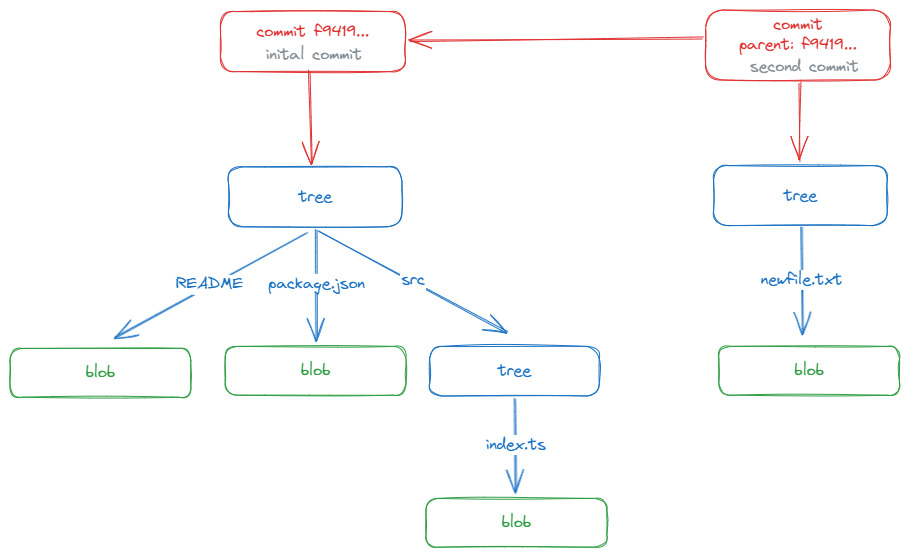- 19 Posts
- 64 Comments

 1·2 years ago
1·2 years agoWhat’s wrong with automating processes?

 1·2 years ago
1·2 years agoIf you’re worried about your degree’s worth then you are certainly not he right person to talk about going through a shit university.

 1·2 years ago
1·2 years agoThe amount of unqualified people is staggering beginning with those who have no university education.
I don’t see it as a problem, because qualifications without competence are meaningless.
You should be more concerned with how qualified people end up performing worse and being less educated, knowledgeable, and prepared than unqualified people.

 1·2 years ago
1·2 years agoIs it not generating HTML on the server to be served to the client?
No, it generates the code that creates the DOM, sets the application state based on the user’s setting, and updates the webapp to resume working in a consistent state.
It basically sends a frozen instance of a full blown JavaScript application.
What you’re describing is, in my opinion, an overly complicated form of dynamically rendering HTML on the backend.
That’s because you’re oblivious to the problem domain,and thus you’re falling back to the unrelated but similar sounding things you’re familiar with to fill in the void I your understanding of the actual problem.
Anyway, that’s my opinion on the matter
My point is that your opinion is a misinformed one,and really doesn’t hold up to scrutiny.

 1·2 years ago
1·2 years agoWhy not another scripting language (no compile necessary)? (…) If I could write my scripts in a nice syntax, but be sure my users will be able to use it effortlessly by distributing to them compiled versions, then that would make both of our lives easier!
Would it make sense to describe your idea as a typescript for bash or sh?

 4·2 years ago
4·2 years agoI remember the first time I read about that concept and immediately thought “you mean the way we’ve been writing websites since the 90s?”
This is a poorly informed take. Your pop’s dynamic html server side rendering has nothing to do with the problem of rendering DOMs generated by JavaScript running in a browser according to the client’s state and leave it in a coherent state. Trying to pass off React’s SSR for the same thing that was done in the 90s is like trying to pass off an Android app as the programs written for DOS.

 7·2 years ago
7·2 years agoI’m not a very trusting person and work alone though so this might just be an emotional decision. But it is nice having a project be composed of code that does just what is needed and nothing else. It makes it easier to fix bugs and especially to maintain the code.
And that’s one of the reasons microservices are a thing.

 5·2 years ago
5·2 years agoThere is a lot of doubling. Why the heck is there Dart/Flutter? Just use Javascript/TypeScript.
This blend of comment was once targeted at TypeScript. Still is.
The truth of the matter is that the purpose of tools is to help people achieve their goal. JavaScript is awfully broken, and many people have been investing their time to come up with solutions to fix it. TypeScript is one of the approaches, but Dart is another one. JavaScript doesn’t go away because it’s the de facto standard to run arbitrary code in a browser, and it carries decades of legacy code. Thus people try and try. TypeScript is now on its 5th major release, and there’s still plenty of work to improve upon the mess that’s JavaScript. No wonder corporations like Google invest their resources building alternatives.

 3·2 years ago
3·2 years agolearn Haskell, write better code
The same has been said about C but people just keep writing awful code in Python.

 162·2 years ago
162·2 years agobut if it’s not readable it’s garbage.
Readability is often in the eye of the beholder, but knowing that a component implements a design pattern is all you need to know how it’s used without even having to peek at the code.
I think the most vocal critics of design patterns are those who are clueless about design patterns, and they are criticising their use just because they are scared of stuff they don’t know.

 8·2 years ago
8·2 years agobut we can agree on which of two implementations is shorter.
Shortness for the sake of being short sounds like optimizing for the wrong metric. Code needs to be easy to read, but it’s more important that the code is easy to change and easy to test. Inline code and function calls are renowned to render code untestable, and introducing abstract classes and handles is a renowned technique to stub out dependencies.

 181·2 years ago
181·2 years agoDuplicate code can be a code smell, but it’s far better to have the same function definition or code block appear twice in the code than extracting a function that tightly couples two components that should not be coupled at all.
See Write Everything Twice (WET) principle.

 3·2 years ago
3·2 years agoI agree. The GIL and packaging woes are a good indication that it’s range of applications isn’t as extensive as other tech stacks.

 11·2 years ago
11·2 years agoHere’s another: most code reviews on larger companies are BS, just for show and nitpicking.
Story time.
Once I worked with a developer that just joined the company straight out of college, and had far more ambition than competency. That developer decided that code reviews where the venue where their high bar for code quality would shine, so they decided to nitpick everything that went against their poorly formed sense of taste. As luck would have it, the developer was assigned to a legacy project that was in cold storage for years and had no tests and linters, and was in a really poor state, and proceeded to leverage that to challenge each and every insignificant detail such as if a space should be at the left or at the right of a symbol. Each code review automatically received dozens of comments nitpicking whitespace changes. What a waste of time with so much noise.
I drop by the project, and noticed the churn that developer alone forced upon everyone, as that team had a rule that all code reviews should be passed by all reviewers and that reviewer made it their point to reject reviews that didn’t complied to their opinion on whitespace. So the first thing I did was onboard a code formatter, and made it my point to subject the spec to an unanimous code review. That problematic developer made it their point to nitpick away each and every single setting, but it turned out some of their opinions conflicted with previous feedback.
So the code formatter tool was onboarded onto the team. Did that stopped the problematic developer from continuing their nitpicking? No. Except this time around other developers started pushing back because the opinions were contradictory and contrasted with the official code formatting style.
All it took was a couple of days for the problematic developer to go from dozens of comments per day to zero. The code formatter was still optional and not fully adopted, but the problematic developer simply ceased with the bickering.

 231·2 years ago
231·2 years agoPython is only good for short programs
Was Python designed with enterprise applications in mind?
It sounds like some developers have a Python hammer and they can only envision using that hammer to drive any kind of nail, no matter how poorly.

 15·2 years ago
15·2 years agoHaving fun when programming should be much more important than having correct or fast code (…)
That’s only remotely reasonable if you’re a weekend warrior that messes with coding as a pastime. Even so, I’m not sure what fun you can extract from dealing with slow, broken code.

 263·2 years ago
263·2 years agoHTML is bad. The language itself feels unintuitive and is clunky compared to modern markdown languages, and let’s be honest, your webpage just consists of nested <div> tags.
My websites do not consist of nested divs. Your webpages might just consist of nested divs, but only if you are clueless about what you’re doing and are oblivious to basic stuff like accessibility support.
CSS is bad. Who knew styling can be so unintuitive and unmanageable? Maybe it made sense 25 years ago, but now it’s just terrible. It’s very clunkily integrated with HTML too in my opinion.
Being unmanageable is the output of the developer team, not the languages they use. Decoupling Presentation from the data and semantics never ceases to make sense. CSS has many issues but the way its integrated with HTML is certainly not one of them.
Frankly, you sound like you blame your tools a lot.</div>

 5·2 years ago
5·2 years agoYou don’t have guarantee nobody touched your file, we should database that keep structure information instead.
What is your definition of file and database? For example, do you think SQLite is a database, and a SQLite database file counts as a file? Do you think that editing SQLite or PostgreSQL with a third party client counts as touching a file?

 2·2 years ago
2·2 years agoDoes it have to?
If you’re a developer looking for a pastime working on a personal project, no. You’re free to waste your time and effort doing anything that pleases you.
Everyone else in the world only bothers with something if it provides any value at all. If a project such as this one fails to provide any value them no one will have any reason to waste their time with it, no matter how many times you rewrite it in Rust.











Possibly payment processing fees. Some banks/payment institutions charge you for a payment.